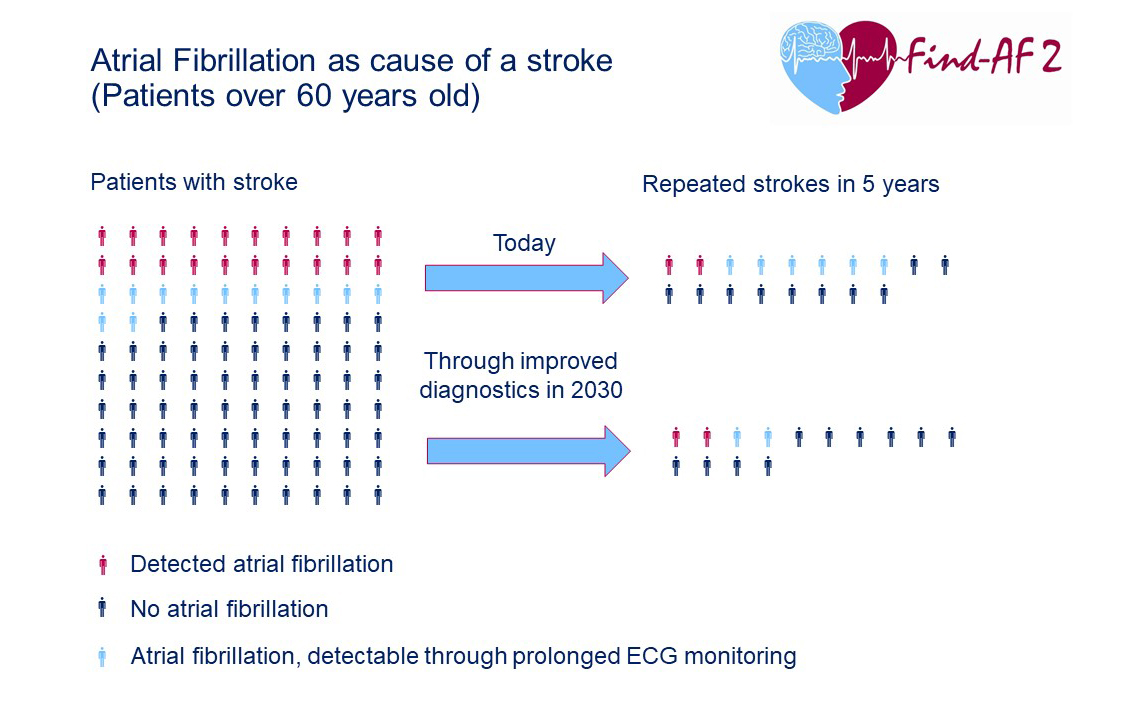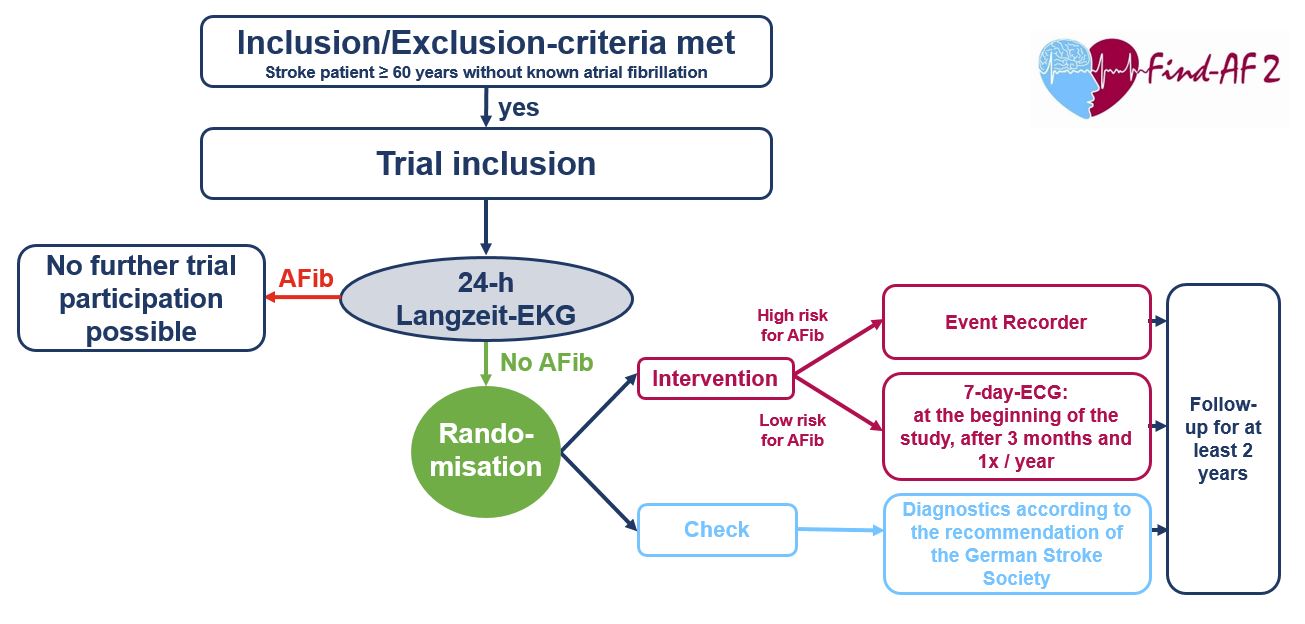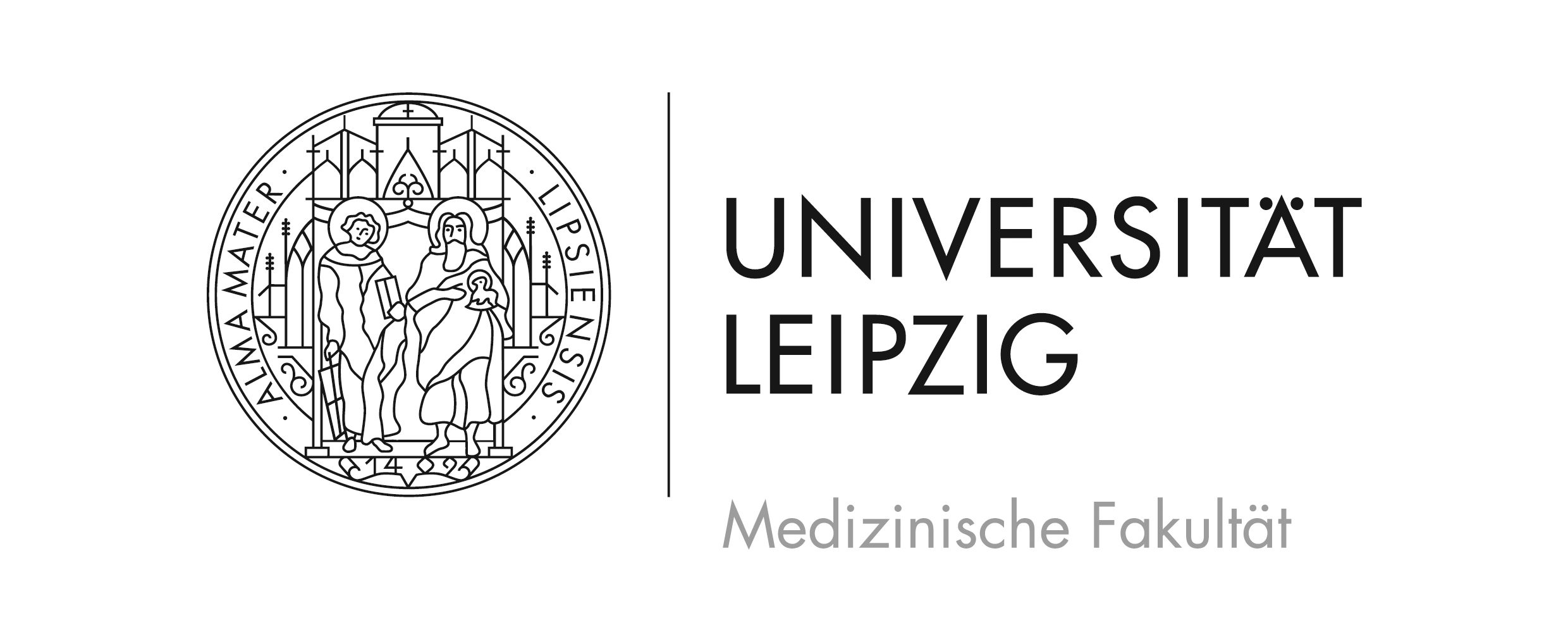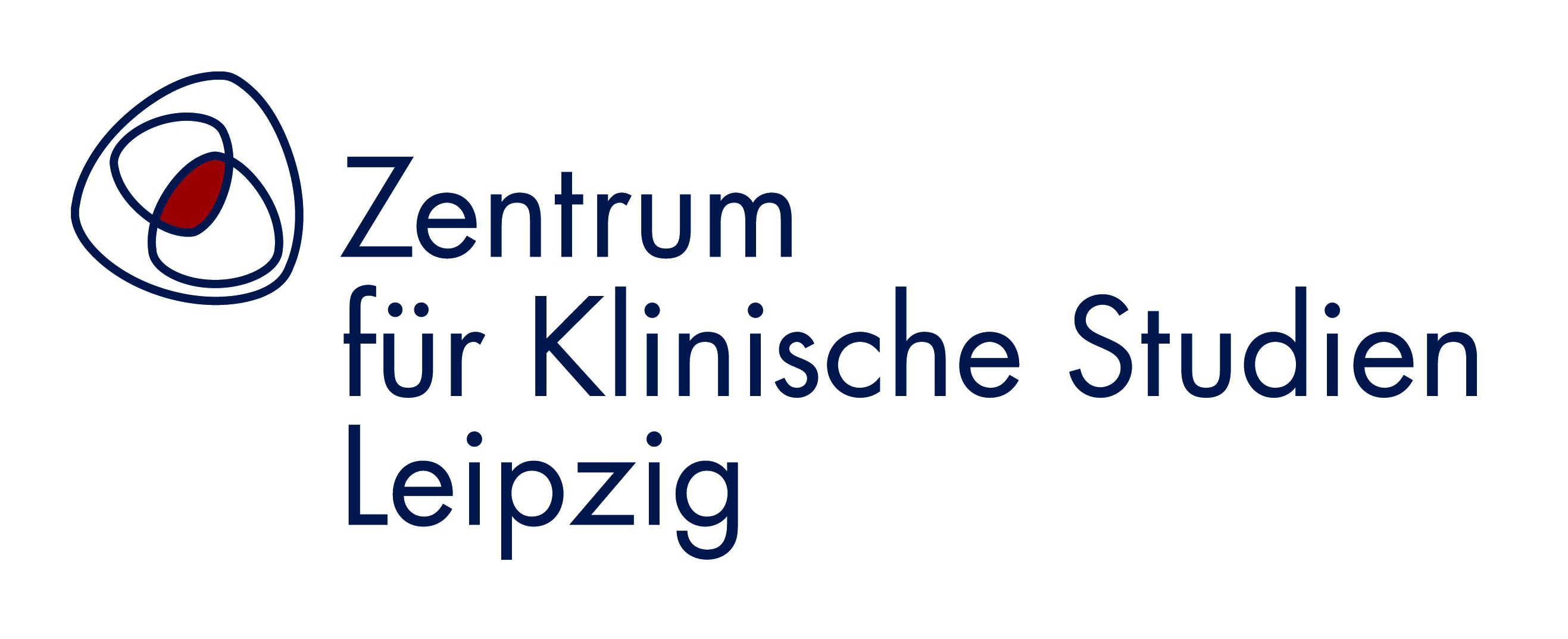Worldwide, strokes are one of the most common causes of permanent disability. Since there can be many reasons for a stroke, the question for doctors after a stroke is how to effectively prevent another one from happening. One possible cause of strokes is atrial fibrillation. This is the most common heart rhythm disorder in old age. Unfortunately, atrial fibrillation is not easy to detect because it often occurs without specific symptoms and the episodes can be of short duration. It therefore often remains undetected and cannot be treated properly.

Explanation of the graph:
Today, out of every 100 stroke patients, 20 are diagnosed with atrial fibrillation. Studies have shown that in addition to these 20 patients, another 12 patients have "hidden" atrial fibrillation, which escapes routine ECG examinations but could be detected by prolonged and intensified ECG examinations. This is particularly important because the diagnosis of atrial fibrillation leads to the initiation of "blood thinning"-treatment (=oral anticoagulation), which can significantly reduce the risk of a recurrent stroke.
Out of 100 stroke patients, 18 will have a new stroke in the following five years, two of which are patients with known and treated atrial fibrillation, and six of the 18 patients have undetected and thus untreated atrial fibrillation. If we assume that we find and treat more previously undetected atrial fibrillation through improved and longer ECG examinations, the number of new strokes would drop to 14 out of 100 patients within five years.
Several large preceding studies have shown that atrial fibrillation can be detected more frequently and earlier through longer and more intensive heart rhythm examinations. If atrial fibrillation is diagnosed, this usually leads to a change in medication to "blood thinning" with so-called anticoagulants. This is a particularly effective therapy that can significantly reduce the risk of a new stroke for certain patients. It is still unclear whether "blood thinning" after such an intensive search for atrial fibrillation can actually reduce the number of new strokes.
The research group led by Prof. Rolf Wachter (Cardiology, University Hospital of Leipzig) and Prof. Klaus Gröschel (Neurology, University Hospital of Mainz) has set out to answer this important question with the clinical trial Find-AF 2. The study is funded by the German Research Foundation (DFG). If it turns out that the intensive search for atrial fibrillation and the subsequent "blood thinning"-treatment can indeed reduce the incidence of recurrent strokes and embolisms, thousands of strokes could be prevented in Germany every year in the future.



